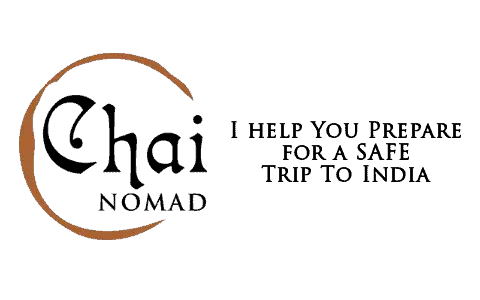I celebrated Independence Day here in India recently, so I took the opportunity to research more about India’s democratic government… specifically, wondering what could America learn from India’s democracy?
America has the oldest democracy in the world, and is often thought of as an example that other countries could follow… at least in America 😉
But India is the largest democracy in the world and can boast of impressive feats such as having 67% voter turnout at the last election. The USA only had a 47% voter turnout at a recent election which was the highest in 50 years.

To get 1.3 billion people to vote, many of whom live in remote corners of India’s diverse country is a mammoth effort. In a recent election they used:
- 2.3 million electronic voting machines
- 1 million polling stations
- 11 million election officials, plus security forces.
Some election officials had to take a 24-hour journey by ship, then speedboat, then a dinghy, then a tribal canoe to set up a voting booth to a remote part of the Andaman & Nicobar Islands.
So let’s take a closer look at India’s democracy and see how it compares with America’s. Let’s cover the similarities first, then move on to the differences… then to what American can learn from India.
What Are the Similarities Between India’s Democracy & America’s Democracy?

India and American democracies share a number of commonalities, that make them easy to think of in the same light.
Democratic republics: Both India and America are democratic republics, who became independent from Britain through the efforts of a collection of inspiring founding fathers.
Constitution: Both have a constitution that is the supreme law. Neither Parliament nor Congress can override the constitution without an amendment.
Both have presidents: Both presidents are the heads of the state and the commander-in-chief of the military.
There are two legislative houses: Both have two houses of the legislative branch in either parliament or Congress. India has the Lok Sabha (Lower House or House of the People) and Rajya Sabha (Upper House or Council of States).
The USA has the House of Representatives (Lower House) and the Senate (Upper House).
Electoral College: The presidents are not elected by a direct popular vote, instead, they are elected by representatives through the electoral college.
Voting System: Both use the First-Past-The-Post voting system, meaning that each voter is only allowed to vote for one candidate. Then the candidate with the most votes wins, in a winner take all. It’s also called the Plurality Voting. There are other types of voting such as Two Rounds of Voting and Proportional Representation.
Two Political Parties: Both countries have two main political parties. India has the Bharatiya Janata Party, often called BJP, which is the right-wing or conservative party. The Indian National Congress, often called Congress or INC, is the left-wing or liberal party. The USA has the Republican party, which is the right-wing or conversative party. The Democratic party, which is the left-wing or liberal party.
What Are the Differences Between India’s Democracy & America’s Democracy?

The main difference between India’s democracy and America’s is that… India has a parliamentary system, while America has a presidential system. Let’s cover the specific differences now.
Prime Minister versus President: India has a president but he has very little power. He reigns but does not rule. The Prime Minister is the executive and the head of the government with the majority of the power. In the USA, the President has the majority of the power.
How is the Executive elected? In India, the people vote for representatives to the Lok Sabha. Then whichever party (or coalition) wins a majority in the Lok Sabha nominates its leader as the Prime Minister. In the USA, the people vote specifically for the president. Then the elected officials in the Electoral College vote for that person based on the voting in their state.
Electoral College: In India, there are 543 constituencies and each one has a say in who will win control of the Lok Sabha. So within a given state, if a candidate loses most of the votes, but wins a few constituencies, then he or she can get votes in the electoral college for that state.
In the USA, there are 50 states and each one has a say in who will be the president. But it is winner-take-all from state to state. For example, if in Michigan 49% support Trump, but 51% support Biden, then all 16 electoral votes go to Biden. Trump gets zero.
Therefore, if a candidate has very little support in a state it would be a waste to campaign there. This means that only a few swing states determine the election, since most states have significant support for only one party or the other. For instance, Texas has voted for a Republican since 1980.
In India, politicians have more of an incentive to campaign in more places so more citizens get to interact with their politicians.
Votes are counted quickly: In India, there are 7 stages of voting and voting takes 37 days. Each region votes every six days. Then all the votes are counting quickly at once. In the USA, the entire country votes on one day, and the results are usually counted within 12 hours. However, there have been cases of a contested election like in Florida in 2000, where it took a Supreme Court decision to determine the election.

Electoral Commission: India has a powerful independent electoral commission, which has done an amazing job holding credible elections with such a vast population. In the USA, the elections are run by the ruling government.
State voting differences: In each state in India, the voting process is the same. In the USA, each state has different procedures. Some still use paper ballots. Others use electronic voting machines. Some have two rounds of voting. Others use the first-past-the-post system.
States with more power: In the US, the states share power with the federal government and can make independent decisions. This is one reason why there are so many ways to vote, each state decides. Plus, they each have their own constitution. In India, there is only one constitution and the states have less power.
Stable versus unstable governments: In India, a Prime Minister can quickly lose power, which has happened in as little as 13 days. If the Parliament votes no-confidence with a simple majority vote, then the Prime Minister is ousted and that party loses power. Then mid-term elections start again. In the USA, it is difficult to remove the President. Only 3 presidents have been impeached, yet none have been removed from office.
Term Limits: The Indian Prime Minister’s term is 5 years, but there are no term limits. Jawaharlal Nehru served for 16 years. There have been 15 prime ministers. In the USA, the President has a term of 4 years and has a two-term limit.
In Parliament, representatives hold seats for 5 years. In Congress, representatives in the House of Representatives hold seats for 2 years and Senators hold seats for 6 years. There are no term limits for Congressmen or Parliament.
Vetoing Bills: In India, the President can send a bill back to Parliament if it doesn’t meet the standards of the Constitution. But if the Parliament passes it again, he should sign it. In the USA, the President can veto any bills from Congress, however, Congress can override his veto with a two-thirds majority.
Executive Orders: The Indian prime minister can issue an executive order, known as an ordinance. But it is only valid for six months and must be voted on by Parliament within 6 months. In the USA, the President can issue executive orders that do not need to be voted on by Congress. The next President will then review them and can cancel them.
Vice Presidents: In India, the Vice President is chosen by the electoral college. In the USA, the Vice President is selected by the President.
Number of Representatives: In India, the Lok Sabha has 545 members and the Rajya Sabha has 250 members. While the comparable House of Representatives has 435 members and the Senate has 100 members.
Cabinet Members or Ministers: In India, the Ministers are nominated by the Prime Minister and can only be nominated from his political party. In the USA, the Cabinet members are nominated by the President and can be anyone, such as experts in their field of expertise. The nominees then need to be approved by Congress.
Write-In Candidates: In the USA, you can write in any candidate for president. You can put yourself, many Americans choose Mickey Mouse for some reason. When Donald Trump was elected, some Republicans wrote in the name of his vice president as a protest vote.
Lisa Murkowski of Alaska was the first senator to win in more than 50 years with a write-in campaign. Not every state counts write-in votes though, and others have paperwork you must fill out.
In India, you can not write anyone in, but you can vote “None of the Above” (NOTA). If there is a majority of NOTA votes, the candidate with the most votes is still elected.

Length of Constitution: India has the longest constitution of any sovereign nation. It is 145,000 words! The USA has the shortest constitution of any nation. It is 4,400 words!
Socialism: In the preamble of the Constitution, it states that India is a “Sovereign, Socialist, Secular, Democratic Republic. While the USA has never used the word, socialism in the constitution and many people would never use that word. Although recently socialism is gaining a following and is less stigmatized.
1000s of Political Parties: India had 2,354 registered political parties in the 2014 elections. There were 8,251 candidates in 460 parties. Many of the political parties are just focused on more regional concerns. The USA only has only two major parties and it is rare for a candidate from a smaller party to be elected.
Less Approval of Majority Party: In India, the BJP and Narendra Modi won by a landslide, which was rare in Indian politics. Yet, they only got 31% of the total votes in India. In the USA, Donald Trump won and got 46% of the popular vote.
Separation of Powers Versus Solidification of Powers: In India, the political party that wins the Lok Sabha nominates Prime Minister. Therefore, most of the power is solidified in the hands of one party and the opposition party has very little power. In the USA, the President may be from a different party than the party which controls Congress.
Politicians can’t change parties: India passed the Anti-Defection Law, which states politicians can’t change political parties after the election. They also can’t vote against their political party. Instead, they would need to resign. In the USA, you can change political parties or vote against your political party. You would then just need to face the voters in the next election.
Absentee Voting: India doesn’t have absentee voting, unless someone is in the military or a government position overseas. You must come to the booth. The USA allows citizens to vote overseas using mail in voting.
What Can America Learn From India’s Democracy?

As Americans, we’re very proud of our democracy. We’re the oldest in the world and one of the largest. But that pride may help us miss the fact that India’s democracy is the largest and has some lessons to share:
Voter Turnout: India had 67% voter turnout at their last election, which is impressive considering the huge size of India, the variety of terrain, and lack of infrastructure in some places. While the USA only had 47% voter turnout at its last election and that was the highest in 50 years. How does India get more people to vote?
Vote on Sundays: Many elections in India are held on Sundays so that workers can vote without having to miss work. The USA has elections on Tuesday and there is no public holiday. So workers often have to take time off work in order to vote.
Independent Electoral Commission (IEC): This is a powerful, autonomous, and neutral body safeguarding the elections and has done a fantastic job. They make sure that voting booths are with 2 kilometers of every resident, no matter how remote.
They set up a voting booth in Gir Forest National Park in Gujurat for one man who was living there with the lions. Officials hiked for a day to reach the village of Malogam in Arunachal Pradesh so one woman could vote. 32 officials needed to be airlifted into remote valleys to set up polling stations. In the past, they’ve also protected the ballots. In the USA, the ruling government controls the election and has an incentive to tip the scales in their direction.
Helps voters get to the polls: The IEC goes house-to-house making sure people have a chance to register to vote with 1.3 billion people and that they are still on the voter rolls.
It’s common for efforts in the USA to disenfranchise some groups of people who may vote for the opposite party. Consider what happened in Georgia with the Republican governor getting rid of voter registrations that had even one character different from the name on their ID card.
Electronic Polls: The power goes off quite often in India, but they used 2.3 million electronic voting machines in the last election. In the USA, many states still use paper ballots. Others use mail only.
No Gerrymandering: In the US, the ruling party sets the area of the voting districts so they can set it up in ways to give them a significant political advantage. In India, an independent commission sets up the constituencies.
Final Words:
Both India and America’s democracies have been an example to the world. There are many differences between them though, and if America wanted to improve it’s democracy it could learn a few things, like:
- Increasing voter turnout by creating an independent election commission, instead of letting the ruling party do it.
- Going around door-to-door helping voters register.
- Committing to bringing voting booths within a few miles of every citizen.
- Changing the election day to Sunday.
- Use one voter system that uses electronic machines.
- Have an arbitrary and independent committee create the districts, instead of the ruling party.
For more about India, I summed up my experience in this post: 472 Days in India: A Foreign Tourist’s Experience + 18 Photos
Related Articles:
- 80 Tourist Scams in India: Everything You Need To Know!
- How Good is the Internet in India?
- What Can $100 Buy in India?


